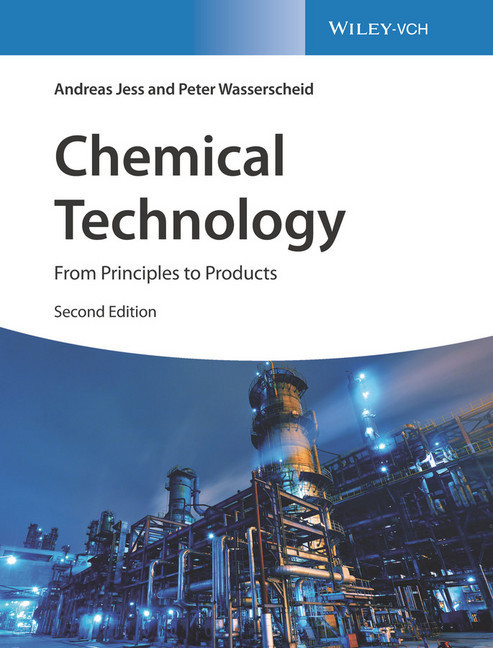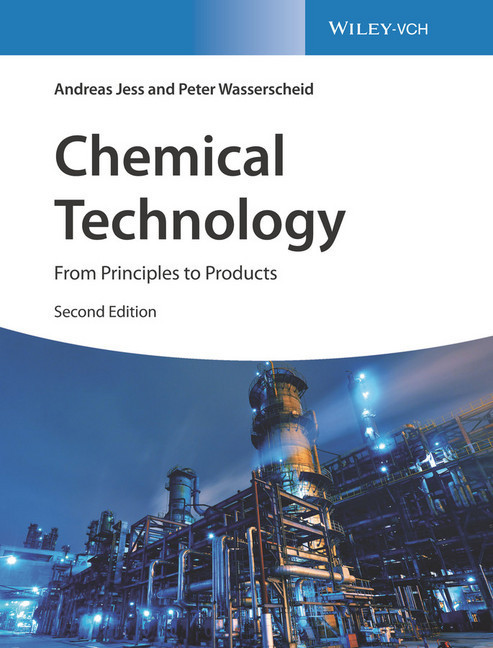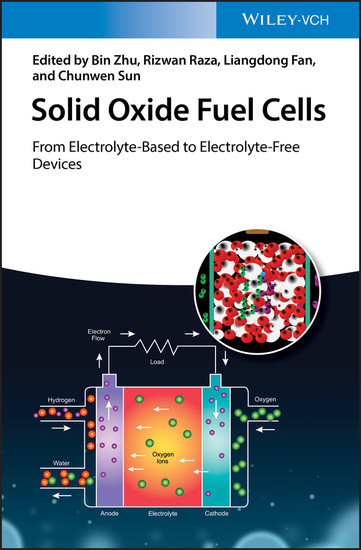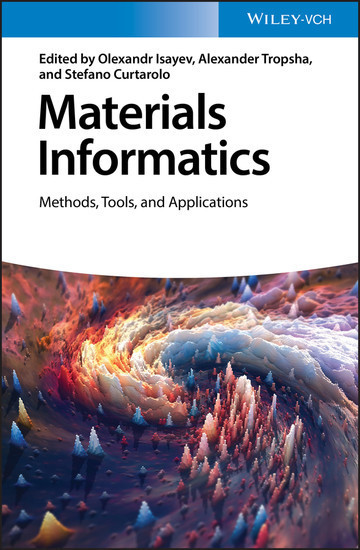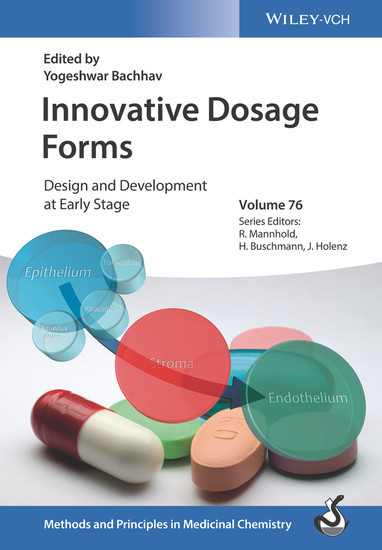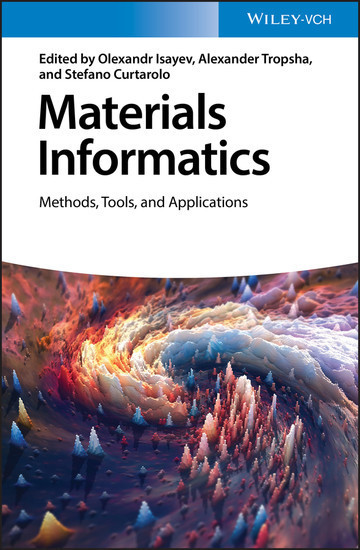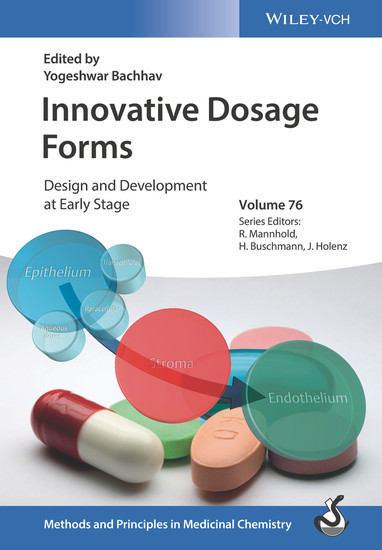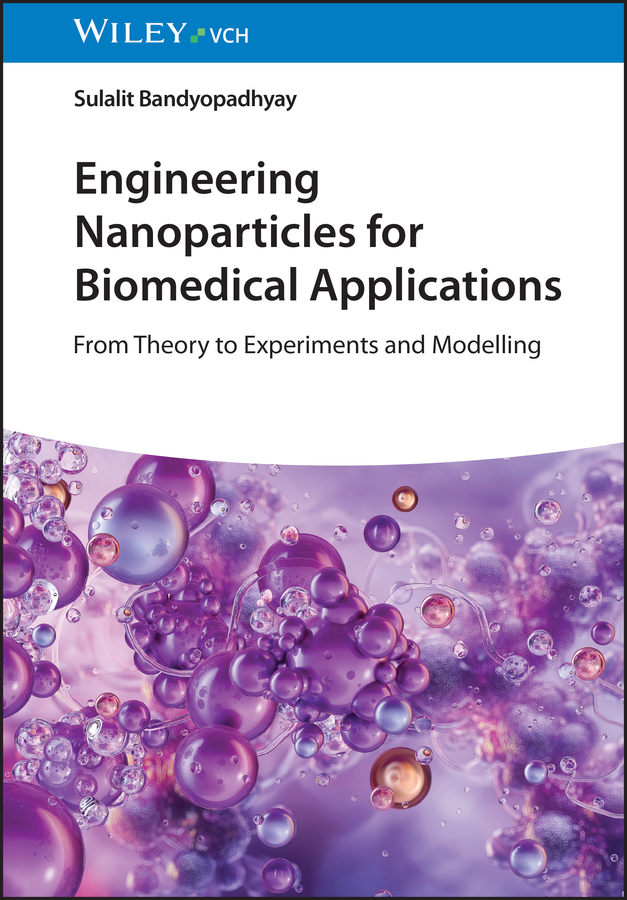Chemical Technology
From Principles to Products
A fully updated edition of a popular textbook covering the four disciplines of chemical technology?featuring new developments in the field
Clear and thorough throughout, this textbook covers the major sub-disciplines of modern chemical technology?chemistry, thermal and mechanical unit operations, chemical reaction engineering, and general chemical technology?alongside raw materials, energy sources and detailed descriptions of 24 important industrial processes and products. It brings information on energy and raw material consumption and production data of chemicals up to date and offers not just improved and extended chapters, but completely new ones as well.
This new edition of Chemical Technology: From Principles to Products features a new chapter illustrating the global economic map and its development from the 15th century until today, and another on energy consumption in human history. Chemical key technologies for a future sustainable energy system such as power-to-X and hydrogen storage are now also examined. Chapters on inorganic products, material reserves, and water consumption and resources have been extended, while another presents environmental aspects of plastic pollution and handling of plastic waste. The book also adds four important processes to its pages: production of titanium dioxide, silicon, production and chemical recycling of polytetrafluoroethylene, and fermentative synthesis of amino acids.
-Provides comprehensive coverage of chemical technology?from the fundamentals to 24 of the most important processes
-Intertwines the four disciplines of chemical technology: chemistry, thermal and mechanical unit operations, chemical reaction engineering and general chemical technology
-Fully updated with new content on: power-to-X and hydrogen storage; inorganic products, including metals, glass, and ceramics; water consumption and pollution; and additional industrial processes
-Written by authors with extensive experience in teaching the topic and helping students understand the complex concepts
Chemical Technology: From Principles to Products, Second Edition is an ideal textbook for advanced students of chemical technology and will appeal to anyone in chemical engineering.
Andreas Jess, PhD is Professor of Chemical Engineering at the University of Bayreuth since 2001. His research interests are the optimization and modeling of catalytic processes, utilization of ionic liquids, and processes for production of fuels and chemicals from fossil and renewable resources.
Peter Wasserscheid, PhD, is Professor of Chemical Engineering at the University of Erlangen-Nuremberg. He is also a founding member of the Solvent Innovation GmbH and acts as its scientific supervisor. His research focuses on highly selective catalytic processes.
Clear and thorough throughout, this textbook covers the major sub-disciplines of modern chemical technology?chemistry, thermal and mechanical unit operations, chemical reaction engineering, and general chemical technology?alongside raw materials, energy sources and detailed descriptions of 24 important industrial processes and products. It brings information on energy and raw material consumption and production data of chemicals up to date and offers not just improved and extended chapters, but completely new ones as well.
This new edition of Chemical Technology: From Principles to Products features a new chapter illustrating the global economic map and its development from the 15th century until today, and another on energy consumption in human history. Chemical key technologies for a future sustainable energy system such as power-to-X and hydrogen storage are now also examined. Chapters on inorganic products, material reserves, and water consumption and resources have been extended, while another presents environmental aspects of plastic pollution and handling of plastic waste. The book also adds four important processes to its pages: production of titanium dioxide, silicon, production and chemical recycling of polytetrafluoroethylene, and fermentative synthesis of amino acids.
-Provides comprehensive coverage of chemical technology?from the fundamentals to 24 of the most important processes
-Intertwines the four disciplines of chemical technology: chemistry, thermal and mechanical unit operations, chemical reaction engineering and general chemical technology
-Fully updated with new content on: power-to-X and hydrogen storage; inorganic products, including metals, glass, and ceramics; water consumption and pollution; and additional industrial processes
-Written by authors with extensive experience in teaching the topic and helping students understand the complex concepts
Chemical Technology: From Principles to Products, Second Edition is an ideal textbook for advanced students of chemical technology and will appeal to anyone in chemical engineering.
Andreas Jess, PhD is Professor of Chemical Engineering at the University of Bayreuth since 2001. His research interests are the optimization and modeling of catalytic processes, utilization of ionic liquids, and processes for production of fuels and chemicals from fossil and renewable resources.
Peter Wasserscheid, PhD, is Professor of Chemical Engineering at the University of Erlangen-Nuremberg. He is also a founding member of the Solvent Innovation GmbH and acts as its scientific supervisor. His research focuses on highly selective catalytic processes.
1;Cover;12;Title Page;53;Copyright;64;Contents;95;Preface of First Edition (and Guidelines How to Use This Textbook);196;Why a Second Edition?;207;Notation;238;Chapter 1 Introduction;438.1;1.1 What Is Chemical Technology?;438.2;1.2 The Chemical Industry;448.3;1.3 The Changing Global Economic Map;489;Chapter 2 Chemical Aspects of Industrial Chemistry;619.1;2.1 Stability and Reactivity of Chemical Bonds;619.1.1;2.1.1 Factors that Influence the Electronic Nature of Bonds and Atoms;619.1.2;2.1.2 Steric Effects;629.1.3;2.1.3 Classification of Reagents;639.2;2.2 General Classification of Reactions;639.2.1;2.2.1 Acid-Base?Catalyzed Reactions;649.2.2;2.2.2 Reactions via Free Radicals;659.2.3;2.2.3 Nucleophilic Substitution Reactions;669.2.4;2.2.4 Reactions via Carbocations;669.2.5;2.2.5 Electrophilic Substitution Reactions at Aromatic Compounds;679.2.6;2.2.6 Electrophilic Addition Reactions;699.2.7;2.2.7 Nucleophilic Addition Reactions;699.2.8;2.2.8 Asymmetric Synthesis;709.3;2.3 Catalysis;729.3.1;2.3.1 Introduction and General Aspects;729.3.2;2.3.2 Homogeneous, Heterogeneous, and Biocatalysis;779.3.3;2.3.3 Production and Characterization of Heterogeneous Catalysts;809.3.4;2.3.4 Deactivation of Catalysts;839.3.5;2.3.5 Future Trends in Catalysis Research;8510;Chapter 3 Thermal and Mechanical Unit Operations;8710.1;3.1 Properties of Gases and Liquids;8810.1.1;3.1.1 Ideal and Real Gas;8810.1.2;3.1.2 Heat Capacities and the Joule-Thomson Effect;9210.1.3;3.1.3 Physical Transformations of Pure Substances: Vaporization and Melting;9510.1.4;3.1.4 Transport Properties (Diffusivity, Viscosity, Heat Conduction);10010.1.4.1;3.1.4.1 Basic Equations for Transfer of Heat, Mass, and Momentum;10010.1.4.2;3.1.4.2 Transport Coefficients of Gases;10310.1.4.3;3.1.4.3 Transport Coefficients of Liquids;10810.2;3.2 Heat and Mass Transfer in Chemical Engineering;11110.2.1;3.2.1 Heat Transport;11110.2.1.1;3.2.1.1 Heat Conduction;11110.2.1.2;3.2.1.2 Heat Transfer by Convection (Heat Transfer Coefficients);11210.2.1.3;3.2.1.3 Boiling Heat Transfer;12210.2.1.4;3.2.1.4 Heat Transfer by Radiation;12310.2.1.5;3.2.1.5 Transient Heat Transfer by Conduction and Convection;12410.2.2;3.2.2 Mass Transport;12810.2.2.1;3.2.2.1 Forced Flow in Empty Tubes and Hydrodynamic Entrance Region;12810.2.2.2;3.2.2.2 Steady?State and Transient Diffusive Mass Transfer;12910.2.2.3;3.2.2.3 Diffusion in Porous Solids;13110.3;3.3 Thermal Unit Operations;13510.3.1;3.3.1 Heat Exchangers (Recuperators and Regenerators);13610.3.2;3.3.2 Distillation;14110.3.2.1;3.3.2.1 Distillation Principles;14210.3.2.2;3.3.2.2 Design of Distillation Columns (Ideal Mixtures);14610.3.2.3;3.3.2.3 Azeotropic, Extractive, and Pressure Swing Distillation;15010.3.2.4;3.3.2.4 Reactive Distillation;15210.3.3;3.3.3 Absorption (Gas Scrubbing);15210.3.3.1;3.3.3.1 Absorption Principles;15210.3.3.2;3.3.3.2 Design of Absorption Columns;15810.3.4;3.3.4 Liquid-Liquid Extraction;16010.3.4.1;3.3.4.1 Extraction Principles;16010.3.4.2;3.3.4.2 Design of Extraction Processes;16210.3.5;3.3.5 Adsorption;16410.3.5.1;3.3.5.1 Adsorption Equilibrium and Adsorption Isotherms;16410.3.5.2;3.3.5.2 Adsorption Kinetics (Single Particle);17110.3.5.3;3.3.5.3 Design of Adsorption Processes;17310.3.6;3.3.6 Fluid-Solid Extraction;17810.3.6.1;3.3.6.1 Principles of Fluid-Solid Extraction;17810.3.6.2;3.3.6.2 Design of Fluid-Solid Extractions;18010.3.7;3.3.7 Crystallization;18110.3.7.1;3.3.7.1 Ideal Binary Eutectic Phase System;18110.3.7.2;3.3.7.2 Ideal Binary Phase System with Both Solids Completely Soluble in One Another;18210.3.8;3.3.8 Separation by Membranes;18310.3.8.1;3.3.8.1 Principles of Membrane Separation;18310.3.8.2;3.3.8.2 Applications of Membrane Separation Processes;18610.4;3.4 Mechanical Unit Operations;19110.4.1;3.4.1 Conveyance of Fluids;19110.4.1.1;3.4.1.1 Pressure Loss in Empty Tubes;19110.4.1.2;3.4.1.2 Pressure Loss in Fixed, Fluidized, and Entrained Beds
Jess, Andreas
Wasserscheid, Peter
| ISBN | 9783527815647 |
|---|---|
| Artikelnummer | 9783527815647 |
| Medientyp | E-Book - PDF |
| Auflage | 2. Aufl. |
| Copyrightjahr | 2019 |
| Verlag | Wiley-VCH |
| Umfang | 908 Seiten |
| Sprache | Englisch |
| Kopierschutz | Adobe DRM |

